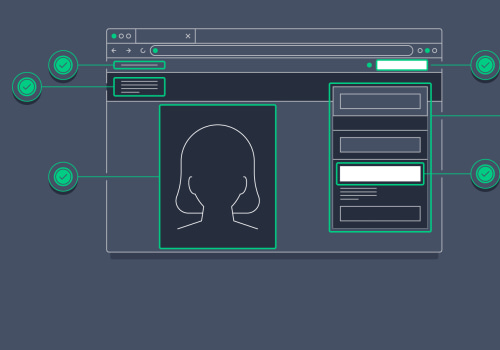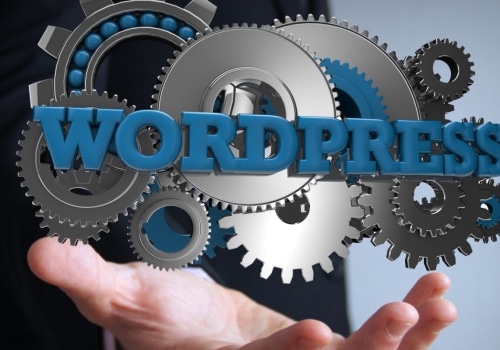What is an easy to use website and why it matters. An easy-to-use website makes it easy for users to search for information from any device. Because your website is easy to use, users spend more time interacting with your website, which in the long run translates into conversions. A website that meets the best practices and relevant web design standards is usually more robust and reliable.
It also ensures that the website loads faster and has a consistent appearance across all browsers and devices. It also makes it easy to find problems and resolve problems if necessary. A positive user experience is important when it comes to bringing traffic to your website. Understanding these key components is an important part of your brand's digital marketing success.
Maybe the navigation was difficult to use or wasn't rendering correctly on the device you were on. Maybe it even had an outdated feel or there were errors when loading the graphics. If you're like most consumers, that user experience has probably affected your overall opinion of the company. In fact, you might have even chosen a competitor who had a more professional website.
Why? The success of your digital marketing depends on the presence of your website and certain mistakes can really damage your overall reputation as a quality company. To help you prevent this from happening, we've compiled 16 things to know when creating an easy-to-use website. A user-friendly website is a page that looks professional and is easy to navigate for anyone who visits your website, including people who require certain accessibility needs. The idea behind this process is called usability, which basically means that the website is easy to use and allows the visitor to access the right information in the easiest way possible.
To give you an idea of the areas you should consider when determining if your website is easy to use, here are some features to consider. One of the most important features of an easy-to-use website is efficient navigation. Whatever structure you select, it's vital that you allow visitors to get where they want to be quickly and efficiently. Easy-to-use websites have a clear call to action.
When your visitors can clearly identify the next steps, they're much more likely to actually do them. For example, a button that links to a contact form to book a session or a phone number to make a call. Not only are fast load times critical to the user experience, but they also have a big impact on SEO. So how do you actually create an easy-to-use website? Website design isn't about what's most convenient for your team.
Instead, you should choose a style that puts the user and their needs first. When you adopt this perspective as your ultimate goal, it's easier to spot areas where there might be a problem or where the overall user experience isn't the best. Another tip is to use language and tone that are accessible to your target audience. When designing an easy-to-use website, choose color combinations that reflect your brand values.
Nowadays, no one wants to read long paragraphs and walls of text. Instead, use information fragmentation as a way to visually divide the data sections of your website. The efficiency of your online forms is important to the ease of use of your website. After all, if someone takes the time to fill one out, they'll likely need a follow-up at the right time.
Make sure your forms are simple enough to be easy to use, work properly, and send them to the right person to handle the request, whether it's an automatic download, a customer service representative, a member of the sales team, or someone else. If your website is old or you haven't updated it in a couple of years, the first step in creating a user-friendly website is to improve the overall design. Having a website that's easy to navigate is crucial to the user experience. Not only is mobile compatibility crucial to the overall user experience, but it's also an important component of search engine optimization (SEO).
Finally, be sure to consider basic psychology when it comes to creating an easy-to-use website. There are certain elements that most people are used to when it comes to visiting a page. If you're not sure where to start, take a look at your favorite pages or even competing sites to see how they've used the basic architecture of the site. Creating an easy-to-use website is critical if you want your brand to stand out as a reliable source within your industry.
Many companies make the mistake of ignoring usability. The usability of any website is crucial to its success, and should never be ignored. Usability can help your website perform better and increase your chances of success. It can also help your business increase sales and revenues.
Not only must your website look attractive, but it must also offer a seamless user experience for visitors in order for it to be successful. That's why usability is so crucial. It will make your website stand out from the crowd. The first step is to see how your current website looks on a mobile device.
You can find out using Google's mobile site checker. If your website can't be accessed on a mobile device right now, you can create a free mobile version using web-based mobile website builders. Everyone, including the blind, the crippled, and the elderly, should be able to visit an easy-to-use website. These people often use screen readers to access the Internet.
By making your website accessible, you ensure that all your potential users, including people with disabilities, have a decent user experience and can easily access your information. By implementing accessibility best practices, it also improves the usability of the site for all users. Usability is determined by the way content is organized and presented on your website. Nowadays it's much more important, as websites provide a wealth of information and tools to attract your target market.
Plan the sections and categories of your website carefully and present the content in such a way that users can easily discover it. Always consider the point of view of your users. This is especially important if your company's website has a lot of material. It is essential to format the content in this way.
Headings, subheadings, paragraphs, bullet points, and lists are useful for dividing content and making it easier for readers to read. Nothing irritates website visitors more than a website that takes a long time to load. In fact, delays in load times are one of the most common reasons why people leave a website. It's critical to ensure that your website loads in 4 to 6 seconds for optimal usability.
It also has an impact on your search engine ranking. You can use a free tool like Pingdom to assess the speed of your website and get recommendations on how to improve it. One of the most important things affecting website speed are third-party website plugins and widgets, such as website monitoring and social networks. Limit your use to only those that are absolutely necessary.
Although today's browsers have progressed and become more efficient, there are still significant differences in the way different browsers read a web page. It's critical that your website looks and behaves the same on all major browsers, including Chrome, Internet Explorer, Firefox, Safari and Opera. Simple details like this set a professionally designed website apart from the competition. One of the most fundamental and crucial aspects of web design that should never be ignored is the proper contrast between the background and the content of the website.
The material will be legible and easy to read if there is a good contrast between the background and the text, such as a black font on a white background. On the other hand, the lack of contrast makes it difficult for visitors to read your material. It's critical to ensure that your forms are easy to use and accessible to everyone if you want to get the most out of your website. The success of a website depends on its usability.
Usability increases your chances of success by allowing visitors to have a seamless experience. It's one of the things that sets a well-designed website apart from others. The 11 usability qualities listed above must be present on any website. It can help your website succeed.
Website visitors don't like to be surprised, and they definitely don't like to work hard to find information hidden on a page. In addition to providing information in a predictable way throughout the site, an easy-to-use website will also format the content so that it is easily digestible. The ease of use of a website is one of the main components of software ergonomics. Also known as usability engineering, this discipline refers to the ease with which users can access and navigate a given web presence, whether on a desktop, mobile or tablet.
A website that is easy to understand and fast to operate is what counts most when it comes to ease of use. Complying with conventional design standards and ensuring that you are up to date with technical requirements are two fundamental principles that should never be overlooked. Here are the features to consider when developing an easy-to-use website. On the World Wide Web, a company's website is the only point of contact that a company has with anyone interested in it.
Therefore, companies are totally dependent on their web presence to achieve their online objectives, whether commercial or otherwise. This scenario, seen from an alternative perspective, means that the user of a company's website will make a judgment about that company that is strongly correlated with how they perceive their website. If a company's website is usable, it's very likely that the user will achieve their goal of using it. This, in turn, will be an active contribution that will help the company achieve its own objectives.
Now, if we consider this successful scenario with around 2.1 billion Internet users, we will realize why the usability of a website is essential for any company with a web presence. Many businesses receive calls from potential or current customers asking them simple questions about location and hours of operation. If you miss a call, the customer is dissatisfied. Calls can also distract your staff from focusing on the most important parts of your business.
A website can reduce these calls and increase internal productivity. At the same time, it helps customers find useful information without needing to call, which ultimately provides a better overall user experience. The ultimate goal of anyone visiting your website is to quickly find the information they're looking for. In addition, the design of your website should facilitate that process and help visitors navigate your website without getting lost.
The easier your website is to use, the more likely people are to interact with your content and take the desired actions. A good web design should aim to provide the best user experience, which ultimately translates into conversions. If they feel that your website was specifically designed with them in mind, they'll remember it and come back to use it every time they have a need that you can solve. The Americans with Disabilities Act (ADA) specifically outlines several areas in which website owners should facilitate access to information, regardless of whether someone has a disability or a challenge that prevents them from navigating the current design.
While large companies rely mostly on typical old school web design tricks (which include the usual functions, such as multi-language options and a navigable page header or sidebar), smaller companies are starting to prefer scrollable websites. One of the biggest benefits of a good website design for your audience is that it can help them navigate the site easily. Airbnb, for example, has a very simple but attractive website design where you can find everything directly from the home page. So, if you're looking for designers to create your website, take a good look at them and make sure they're capable of designing user-friendly and accessible websites.
If your website is currently not accessible from mobile devices, you can create a mobile version of your website for free with the help of web-based mobile website builders. Most website designers and agencies aren't even aware of it, let alone able to design an accessible website. So, whether you build your website yourself or use a web design agency, make sure you design an accessible website. The 508 website accessibility guidelines highlight simple web design techniques that can be applied to ensure that your website can be easily accessed (on-screen readers), making your website available to a wider audience.
Your website should be designed with your audience in mind and you should ensure that it provides a good user experience. A website that follows the best practices and applicable web design standards is usually more stable and reliable. .




